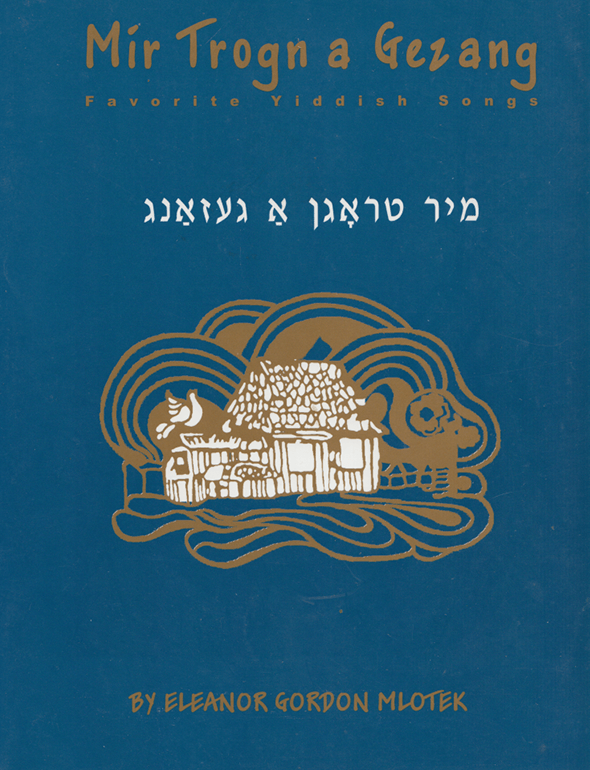From the poem by the Indian poet, Rabindranath Tagore (1861-1941). One version published in 1932 by A.Z. Idelsohn; another in 1946 by Ben Yomen.

Why did the little candle go out?
I guarded it from wind and from storm,
wanting for it to burn –
That is why the candle went out.
Why did the little blossom wither?
I guarded it, hugged it to my heart,
wanting for it to bloom –
That is why the blossom withered.
Why did the string burst?
I stretched it higher and tighter,
wanting it to resound –
That is why the string burst.
Far vos iz dos likhtele farloshn?
lkh hob es gehitn fun vint un fun shturem,
Gevolt es zol brenen —
Derfar iz dos likhtele farloshn.
Far vos iz dos blimele farvyanet?
lkh hob es gehitn, tsum hartsn getulyet,
Gevolt es zol blien —
Derfar iz dos blimele farvyanet.
Far vos iz di strune tserisn?
lkh hob zi getsoygn alts hekher un shtarker,
Gevolt zi zol shpiln —
Derfar iz di strune tserisn.
פֿאַר װאָס איז דאָס ליכטעלע פֿאַרלאָשן?
איך האָב עס געהיטן פֿון װינט און פֿון שטורעם,
געװאַלט עם זאָל ברענען —
דערפֿאַר איז דאָס ליכטעלע פֿאַרלאָשן.
פֿאַר װאָס איז דאָס בלימעלע פֿאַרװיאַנעט?
איך האָב עס געהיטן, צום האַרצן געטוליעט,
געװאָלט עס זאָל בליען —
דערפֿאַר איז דאָס בלימעלע פֿאַרװיאַנעט.
פֿאַר װאָס איז די סטרונע צעריסן?
איך האָב זי געצױגן אַלץ העכער און שטאַרקער,
געװאָלט זי זאָל שפּילן —
דערפֿאַר איז די סטרונע צעריסן.
Song Title: Far Vos?

First published in 1972, Mir Trogn A Gezang: Favorite Yiddish Songs was reprinted six more times (in 1977, 1982, 1985, 1987, 1988, 2000) due to popular demand. The songs in this anthology represent a sampling of beloved folk and well-known Yiddish songs, many of which are scattered in various song collections; some appear in very rare and inaccessible collections; and some were never before published. Folk songs comprise about a third of this volume and were selected mainly on the basis of popularity and sometimes for their historic significance. Needless to say, they are only representative of the vast, rich treasure of Yiddish folk material. The selection was made not only on the basis of personal preference, but in the knowledge they are favorites of many who sing these songs. Most of the songs represent the repertoire that was sung at Yiddish summer camps, May 1st demonstrations and at social gatherings. Many songs were introduced to American Jewry by Jewish immigrants who came to the United States after World War II, for whom these songs had been favorites in Poland and other East European communities destroyed by the Nazis.